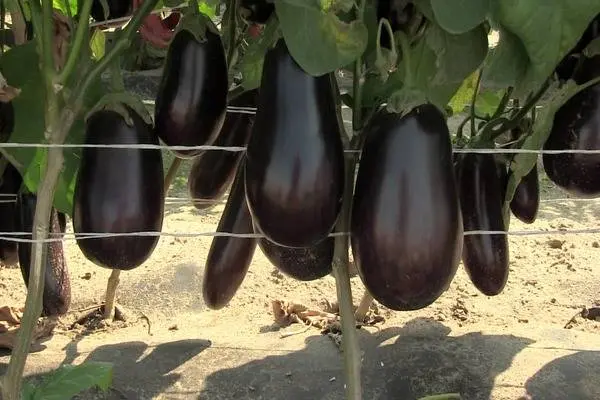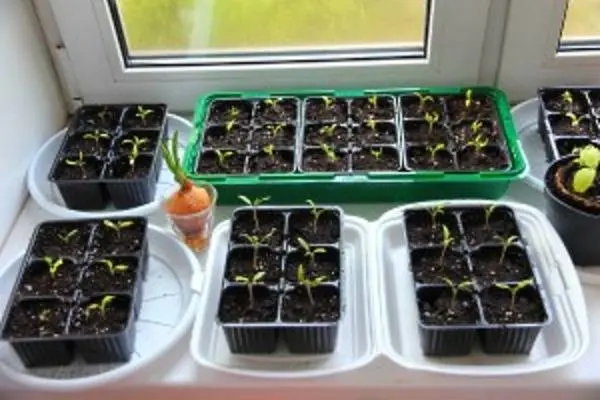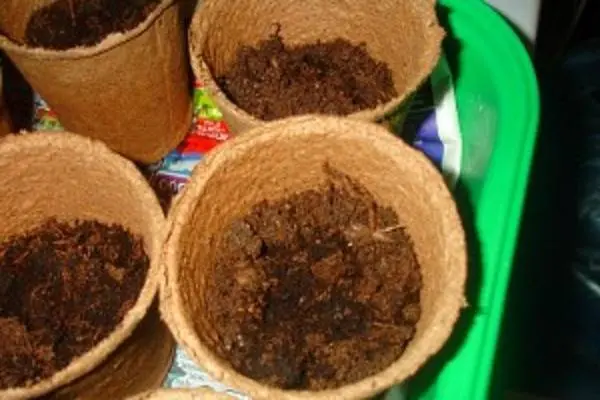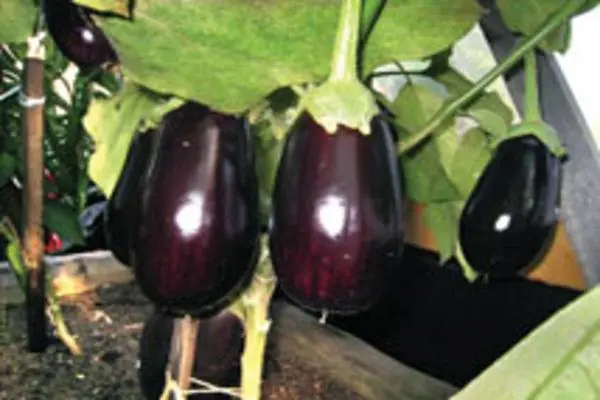Contents
Thanks to the variety of eggplant varieties, it is already easy to choose a plant that will grow well in a particular region. Therefore, more and more summer residents began to plant eggplant in the plots.
Hybrid description
Eggplant varieties Marzipan refers to mid-season hybrids. The period from seed germination to the formation of ripe fruits is 120-127 days. Since this is a rather thermophilic culture, Marzipan eggplant is planted mainly in the southern regions of Our Country. The eggplant stalk grows to a height of about 1 m and is resistant. However, the Marzipan F1 eggplant must be tied up, as the bush can quickly break under the weight of the fruit. Flowers can be collected in inflorescences or are single.
Fleshy fruits ripen with a weight of about 600 g. The size of an average eggplant is 15 cm long, 8 cm wide. The flesh of the fruits is pale cream in color, with a small amount of seeds. On one bush grows 2-3 eggplants.

Advantages of eggplant varieties Marzipan F1:
- resistance to adverse weather;
- neat fruit shape and pleasant taste;
- 1,5-2 kg of fruits are collected from the bush.

Growing seedlings
It is recommended to sow the seeds in the second half of March; they are preliminarily prepared before sowing. The grains are first heated for about four hours at a temperature of + 24-26˚ C, and then kept for 40 minutes at +40 ˚ C. For disinfection, seeds are soaked for 20 minutes in a solution of potassium permanganate.
Then the seeds are laid out in a wet cloth and left in a warm place.
Landing stages
For growing seedlings, the soil can be prepared independently: mix 2 parts of humus and one part of soddy land. To disinfect the mixture, it is calcined in the oven.
- You can sow seeds in pots, cups, special containers. The containers are filled with soil by 2/3, moistened. In the center of the cup, a depression is made in the ground, germinated seeds are planted and covered with a thin layer of soil. The cups are covered with foil.
- When planting seeds of the Marzipan F1 variety in a large box, shallow grooves should be made on the surface of the soil (at a distance of 5-6 cm from each other). The container is covered with glass or film and placed in a warm place (about + 25-28˚ C).
- As soon as the first shoots appear (after about a week), remove the cover from the containers. Seedlings are placed in a bright place.
- To prevent the seedlings from stretching, the temperature is lowered to + 19-20˚ C. The seedlings are watered carefully so that the soil does not erode.

Dive eggplant
When two true leaves appear on the sprouts, the seedlings can be planted in larger containers (approximately 10×10 cm in size). Containers are specially prepared: several holes are made in the bottom and a thin layer of drainage is poured (expanded clay, broken brick, pebbles). The soil used is the same as for seeds.

A couple of hours before transplanting, the seedlings are watered. Take out the Marzipan eggplant carefully so as not to damage the root system. In a new container, the seedlings are sprinkled with moistened soil to the level of the cotyledon leaves.
During this period, the plant should be protected from direct sunlight.
You can water eggplants of the Marzipan F1 variety 5-6 days after picking. Approximately 30 days before transplanting plants to the site, seedlings begin to harden. To do this, containers with plants are taken out to fresh air. The hardening procedure is carried out by gradually increasing the time spent in the open air.
Feeding and watering seedlings
Special attention should be paid to feeding seedlings. The best option is to apply fertilizer twice:
- as soon as the first leaves grow on the sprouts, a mixture of fertilizers is applied. In 10 liters of water dissolve a teaspoon of ammonium nitrate, 3 tbsp. l superphosphate and 2 tsp potassium sulfate;
- one and a half weeks before transplanting seedlings to the site, the following solution is introduced into the soil: 10-60 g of superphosphate and 70-20 g of potassium salt are diluted in 25 liters.
On the plot, eggplant of the Marzipan F1 variety needs fertilizers (during flowering and during fruiting):
- when flowering, add a solution of a teaspoon of urea, a teaspoon of potassium sulfate and 2 tbsp. l superphosphate (the mixture is dissolved in 10 l of water);
- during fruiting, a solution of 2 tsp of superphosphate and 2 tsp of potassium salt in 10 l of water is used.
When watering, it is important to be careful so that the soil does not erode and the root system of the bushes is not exposed. Therefore, drip irrigation systems are the best option. Eggplant varieties Marzipan F1 are sensitive to water temperature. Cool or hot water is not suitable for a vegetable, the optimum temperature is + 25-28˚ C.
In this case, you should not go deep enough so as not to damage the roots of the bushes.

The frequency of watering depends on climatic conditions. Before flowering, it is enough to water eggplant of the Marzipan F1 variety once a week (about 10-12 liters of water per square meter of plot). In hot weather, the frequency of watering is increased (up to 3-4 times a week), since drought can cause foliage and flowers to fall off. During the flowering period, the bushes are watered twice a week. In August, the frequency of watering is reduced, but at the same time they are guided by the condition of the plants.
eggplant care
Seedlings with 8-12 leaves can already be planted on the site. Since eggplant is a heat-loving crop, it is possible to transplant F1 Marzipan sprouts into the greenhouse after May 14-15, and into the open ground – in early June, when the probability of frost is excluded and the soil is well warmed up.
According to gardeners, the first garter of the stems is done as soon as the bush grows to 30 cm. At the same time, the stem cannot be tightly tied to the support, it is better to leave a margin. When powerful side shoots are formed, they must also be tied to a support (this is done about twice a month). 2-3 strongest shoots are left on the bush, and the rest are cut off. At the same time, on the main stem of the eggplant of the Marzipan F1 variety, it is necessary to pick off all the leaves growing below this fork. Above the fork, shoots that do not form fruits should be removed.
Foliage is also removed to provide better illumination of the flowers and reduce the likelihood of eggplant being affected by gray rot. Be sure to remove secondary shoots.
During the entire growth and development of bushes, it is important to remove dried and damaged leaves. At the end of the season, it is advisable to pinch the tops of the stems and leave 5-7 small ovaries that will have time to ripen before frost. Also during this period, flowers are cut off. If you follow these rules, then you can harvest a magnificent harvest in the autumn.

Features of growing eggplant
Most often, a poor harvest is caused by improper care of the Marzipan bushes. The most common mistakes:
- with a lack of sunlight or abundantly overgrown green mass, the fruits do not gain a beautiful rich purple color and remain light or brown. To fix this, some of the leaves on the tops of the bushes are removed;
- uneven watering of eggplant varieties Marzipan F1 in hot weather leads to the formation of cracks in the fruit;
- if cold water is used during irrigation, the plant can drop flowers and ovaries;
- the folding of eggplant leaves into a tube and the formation of a brown border along their edges means a lack of potassium;
- with a lack of phosphorus, the leaves grow at an acute angle with respect to the stem;
- if the culture lacks nitrogen, then the green mass acquires a light shade.
Proper care of eggplant Marzipan F1 contributes to the full development of the plant and ensures a bountiful harvest throughout the season.









